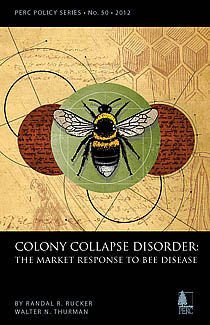
If you were to rely on media reports alone, you might be inclined to believe that honeybees and honey are now in short supply. Based on the recent documentaries about Colony Collapse Disorder, you might believe that crops are at risk of going unpollinated and that we are heading towards a different “silent spring”—one in which the familiar springtime buzzing of the bee is no more.
Yet, somehow, the honey is in the cupboard and farmers across the country are still able to supply food to stock our shelves, all with little or no economic impact from CCD. How can this be?
As two prominent agricultural economists, Walter Thurman and Randal Rucker, discuss in a new PERC Policy Series, the market response of beekeepers provided a solution to the problem. Despite early predictions that CCD would cause billions of dollars of direct loss in crop production, beekeepers reacted so swiftly that virtually no changes were detected by consumers. While overcoming the difficulties of CCD has been no easy matter, beekeepers have proven themselves adept at navigating such changing market conditions.
“The state of the honey bee population – numbers, vitality, and economic output – are the products of not just the impact of disease but also the economic decisions made by beekeepers and farmers,” writes Rucker and Thurman.
You can read the latest PERC Policy Series here.


